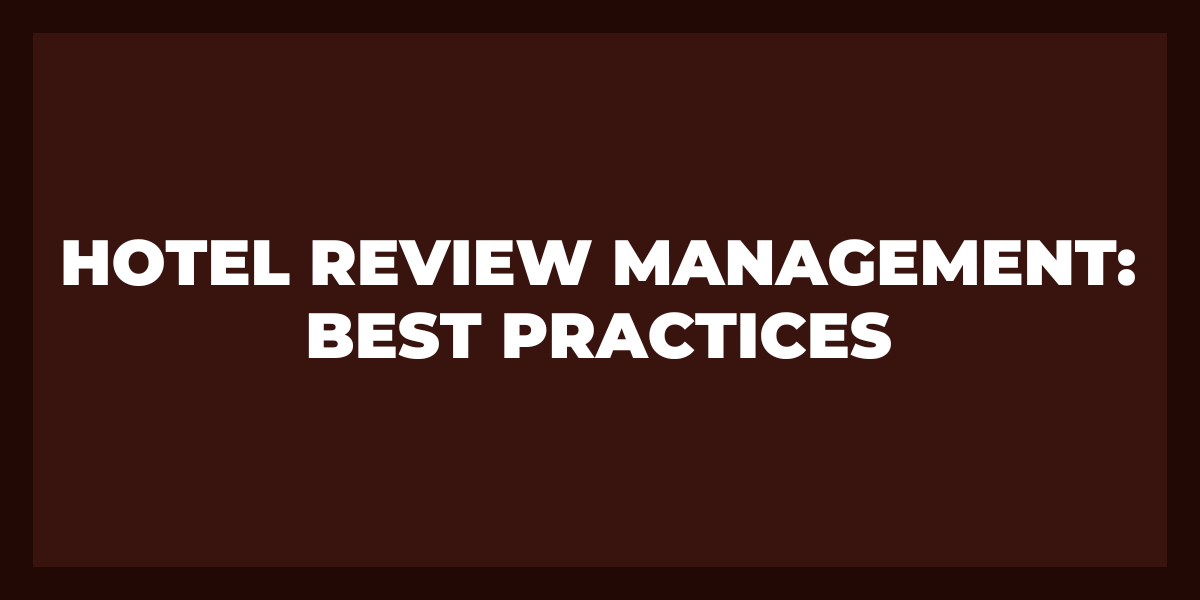Net Promoter Score (NPS) is a Customer Experience (CX) metric that measures customer loyalty and satisfaction. It’s a simple way to gauge how likely your customers are to recommend your product or service to others, and it’s an important metric to track over time.
The NPS score has two critical components: the Promoter score and the Detractor score. The Promoter score is based on customers who responded with a 9 or 10 on the 0-10 scale, and the Detractor score is based on customers who responded with a 0-6. The overall NPS score is calculated by subtracting the Detractor score from the Promoter score.
If you want to improve your customer experience, conducting an NPS survey is a great start. In this article, we’ll walk you through completing an NPS survey, asking questions, and using your results to improve your customer experience.
Ready to get started? Let’s dive in!
How to Conduct an NPS Survey
There are a few different ways to conduct an NPS survey. You can send out a paper survey, use a tool like SurveyMonkey or Google Forms, or use a customer feedback platform like GetFeedback or Qualtrics competitor.
Whichever method you choose, there are a few key things to keep in mind:
Keep it short and sweet: The best transactional NPS surveys are short and to the point. Stick to 1-2 questions so your loyal customers can quickly provide feedback without getting overwhelmed or taking too much time out of their day.
The best NPS surveys are short and to the point. Stick to 1-2 questions so your customers can quickly provide feedback without getting overwhelmed or taking too much time out of their day.
Timing is everything: When you send NPS surveys will make a big difference in the response rate. We recommend sending surveys immediately after customers interact with your product or service, such as after they make a purchase or sign up for a free trial. This way, they’ll be fresh on the experience and more likely to remember any pain points.
We recommend sending surveys immediately after customers interact with your product or service, such as after they make a purchase or sign up for a free trial. This way, they’ll be fresh on the experience and more likely to remember any pain points.
Make it easy to respond: The easier you make it for customers to respond, the more likely you will get feedback. Use a tool that allows customers to provide feedback, such as GetFeedback’s one-click NPS feedback survey.
Now that you know how to conduct an NPS survey let’s consider what questions to ask.
What Questions Should You Ask in an NPS Survey?
The most important question to ask in an NPS survey is the Net Promoter Score question: “On a scale of 0-10, how likely are you to recommend our product or service to a friend or colleague?
This question alone will give you valuable insights into your customer’s experience. But if you want to dig deeper, you can follow up with additional questions.
For example, you could ask customers who responded with a 9 or 10 why they would recommend your product or service. This can help you identify your company’s key differentiators and what’s working well from a customer perspective.
On the other hand, if you get a low score, you can ask customers to elaborate on their answers. This can help you identify pain points in the customer experience and areas for improvement.
In addition to the Net Promoter Score question, you could also ask customers about their overall satisfaction with your product or service. This can be an excellent way to get feedback on specific features or aspects of the customer experience.
Another option is to ask customers how likely they are to continue using your product or service. This can give you valuable insights into customer churn and whether or not your product is meeting their needs.
Finally, you could ask customers for any suggestions on how you could improve your product or service. This can be a great way to generate new ideas and get feedback on what’s important to your customers.
How to Calculate Your Net Promoter Score
Once you’ve collected customer feedback, it’s time to calculate your Net Promoter Score. To do this, simply follow these steps:
Step 1: Determine how many respondents fall into each category
The first step is to determine how many respondents fall into each of the following categories:
Promoters (9-10): Customers who are likely to recommend your product or service to others
Customers who are likely to recommend your product or service to others Passives (7-8): Customers who are satisfied with your product or service but are not particularly loyal or enthusiastic about it
Customers who are satisfied with your product or service but are not particularly loyal or enthusiastic about it Detractors (0-6): Customers who are unhappy with your product or service and are likely to spread negative word-of-mouth
Step 2: Calculate the percentage of respondents in each category
Once you know how many respondents fall into each category, you can calculate the percentage of respondents in each category. To do this, simply divide the number of respondents in each category by the total number of respondents.
For example, let’s say you surveyed 100 customers and you received the following results:
Promoters (9-10): 60%
60% Passives (7-8): 20%
20% Detractors (0-6): 20%
Step 3: Subtract the percentage of Detractors from the portion of Promoters
The final step is subtracting the percentage of Detractors from the portion of Promoters. This would give us a Net Promoter Score of 40% in our example.
This means that 40% of respondents are likely to recommend your product or service to others, while 20% are likely to spread negative word-of-mouth. This gives a good overview of your company’s performance from a customer perspective.
If you want to dig deeper into your results, you can calculate your Net Promoter Score for each question. To do this, follow the same steps but only include respondents who answered that question.
For example, let’s say you asked customers how likely they are to continue using your product or service. You might get the following results:
Promoters (9-10): 70%
70% Passives (7-8): 20%
20% Detractors (0-6): 10%
This would give you a Net Promoter Score of 60% for this question, which is higher than your overall Net Promoter Score. This indicates that customers are more likely to continue using your product or service than recommend it to others.
How to Use Your Net Promoter Score Results
Once you’ve calculated your Net Promoter Score, it’s time to put the results to good use. Here are some suggestions on how you can use your Net Promoter Score to improve your business:
1. Use it as a starting point for customer feedback
Your Net Promoter Score is a great starting point for customer feedback, but it’s not the whole story. To get a complete picture of your customer’s experience, you must dig deeper into the individual responses.
Start by looking at the comments from Promoters and Detractors. What are they saying about your product or service? What do they like or dislike? What could you do better?
You can also look at the responses to specific questions. For example, if you asked customers how likely they are to continue using your product or service, you might want to look at the comments from customers who answered “9” or “10”.
What is it that they like about your product or service? What keeps them coming back? This feedback can be invaluable in helping you improve your product or service.
2. Use it to track your progress over time
Your Net Promoter Score is a valuable metric, but it’s only one piece of the puzzle. You need to track multiple metrics over time to get a complete picture of your customer experience.
One metric you might want to track is your Net Promoter Score. This will give a good overview of your company’s performance from a customer perspective.
You can also track specific questions from your survey. For example, you might want to follow the percentage of customers likely to continue using your product or service.
This will give you a good idea of whether or not your customers are happy with your product or service. You can get a complete picture of your customer experience by tracking multiple metrics over time.
3. Use it to identify areas for improvement
Your Net Promoter Score is a valuable metric, but it’s only one piece of the puzzle. To get a complete picture of your customer experience, you must dig deeper into the individual responses.
Start by looking at the comments from Promoters and Detractors. What are they saying about your product or service? What do they like or dislike? What could you do better?
You can also look at the responses to specific questions. For example, if you asked customers how likely they are to continue using your product or service, you might want to look at the comments from customers who answered “9” or “10”.
What is it that they like about your product or service? What keeps them coming back? This feedback can be invaluable in helping you improve your product or service.
4. Use it to benchmark your performance
Your Net Promoter Score is a valuable metric, but it’s only one piece of the puzzle. To get a complete picture of your customer experience, you need to compare your results to other companies in your industry.
This will give you a good idea of how your company stacks up against competitors. It can also help you identify areas where you need to improve.
You can use our Net Promoter Score Benchmarking tool to find out how your company compares to others in your industry. This tool allows you to reach your results to over 500 companies in more than 50 industries.
5. Use it to make data-driven decisions
Your Net Promoter Score is a valuable metric, but it’s only one piece of the puzzle. You need to combine your customer feedback with other data sources to get the most out of your customer feedback.
For example, if you’re trying to decide whether or not to launch a new product, you might want to look at your customer feedback data. This can be a valuable source of information in making your decision.
You can also use your customer feedback data to improve your marketing campaigns. By analyzing the responses to your surveys, you can identify which marketing messages resonate with your customers.
This will help you create more effective marketing campaigns that are more likely to generate results.
NPS Survey Best Practices
The world of online surveys is constantly changing, and so are the best practices for conducting them. Here are some tips to help you ensure your NPS surveys are effective:
1. Keep your questions concise and focused.
2. Make sure your questions are easy to understand.
3. Ask closed-ended questions whenever possible.
4. Avoid loaded questions.
5. Use random sampling when surveying customers.
6. Test your survey on a small group of people before sending it out to your entire customer base.
7. Give respondents an incentive to complete your survey.
8. Follow up with respondents who provide negative feedback.
9. Use your NPS data to improve your business.
10. Track your NPS scores over time to see how your efforts are paying off.
By following these best practices, you can be sure that your NPS surveys provide valuable insights into your customer’s experience.
When to Use NPS Survey With Your Customers
Net Promoter Score survey is a popular customer satisfaction metric. It helps businesses to track how likely their customers are to recommend them to others. NPS surveys can be used in various customer-facing industries, such as retail, hospitality, and healthcare.
There are a few key things to keep in mind when using NPS surveys with your customers:
1. Use NPS surveys at critical touchpoints with your customers
This could be after they purchase, receive customer service, or use your product or service. Surveying these critical moments will help you understand how satisfied they are and whether they would recommend you to others.
2. Keep the survey short and simple
Your customers likely have busy lives and don’t want to spend much time filling out a survey. Keep the survey short, sweet, and to the point.
3. Make sure you act on the feedback you receive
If you receive negative feedback, reach out to the customer and see how you can improve their experience. Positive feedback should be celebrated – ensure your team knows when they’re doing a great job!
4. Use NPS surveys alongside other customer satisfaction metrics
NPS surveys are just one way to measure customer satisfaction. They should be used alongside other metrics, such as customer satisfaction surveys, support ticket satisfaction ratings, and social media sentiment analysis.
5. Regularly review your NPS scores
NPS scores can change over time, so it’s essential to keep an eye on them and see how they trend. This will help you to identify any areas of improvement and ensure you’re always providing the best possible experience for your customers.
How to Create a Business Strategy Based on NPS Survey Results
1. Define what an NPS score means for your business.
2. Identify which aspects of your business generate the most NPS scores.
3. Use your NPS scores to create goals and objectives for your business strategy.
4. Incorporate your transactional NPS survey results into your overall marketing strategy.
5. Implement changes based on your NPS survey results to improve customer satisfaction.
How to Use NPS Survey for a Real Estate Business
If you’ve been in the real estate business for a while, you know that one of the best ways to gauge customer satisfaction is by conducting an NPS survey.
NPS, or Net Promoter Score, surveys are short questions that ask customers how likely they are to recommend your business to others on a scale from 0-10. They’re a great way to get feedback from customers about their experience with your business, and they can help you identify areas where you need to improve.
If you’re thinking about using an NPS survey for your business, here are a few tips to keep in mind:
1. Keep the survey short and sweet. Customers are more likely to respond to a brief survey that only takes a few minutes to complete.
2. Ask follow-up questions. After you’ve asked customers how likely they are to recommend your business, ask them why they gave that particular score. This will help you identify areas of improvement.
3. Use the data to improve your business. Once you’ve collected the survey results, look at the feedback and see where you can make changes to improve the customer experience.
If you follow these tips, conducting an NPS survey can be a valuable tool for your real estate business. It can help you get customer feedback, identify improvement areas, and make changes to improve your business.
How to Use NPS Survey for Doctors
Net Promoter Score (NPS) is a metric that measures customer satisfaction and loyalty. It’s a simple way to gauge how likely your patients are to recommend you to their friends and family.
There are a few different ways to use NPS surveys for doctors. You can use them to get patient feedback about their experience with your practice, or you can use them to gauge patient satisfaction with specific treatments or services.
Here’s how to use NPS surveys for doctors:
1. Decide what type of feedback you want to collect
Do you want to know how likely your patients are to recommend your practice? Or do you want to collect feedback about specific treatments or services? Knowing what type of feedback you wish to order will help create survey questions relevant to your needs.
2. Create survey questions that are relevant to your needs
Be sure to ask patients how likely they are to recommend your practice on a scale of 0-10, with ten being the most likely. You can also ask patients about their satisfaction with specific treatments or services or any other questions that are relevant to your needs.
3. Collect responses and calculate your NPS score
Responses to NPS surveys are typically collected using an online survey tool. Once you have ordered the responses, you need to calculate your NPS score. This is done by subtracting the percentage of detractors from the percentage of promoters.
4. Use your NPS score to improve patient satisfaction
Once you have your NPS score, you can use it to improve patient satisfaction at your practice. If you have a high NPS score, that means patients are generally satisfied with your training. If you have a low NPS score, there is room for improvement. Use your NPS score as a starting point for making changes that will improve patient satisfaction at your practice.
How to Use NPS Survey for Home Service Providers
If you’re a home service provider, you know that customer satisfaction is key to your success. But how do you measure customer satisfaction? One way is to use the Net Promoter Score (NPS) survey.
The NPS survey is a simple way to measure customer satisfaction. It’s a one-question survey that asks customers how likely they are to recommend your business to a friend or family member. Customers answer on a scale of 0-10, with ten being the most likely.
There are three types of customers based on their NPS score:
Promoters (score 9-10): These are your happiest customers who will sing your praises and help promote your business.
Passives (score 7-8): These customers are satisfied but could be wooed by the competition.
Detractors (score 0-6): These are your unhappy customers who can damage your business with negative word-of-mouth.
To calculate your NPS, you take the percentage of Promoters and subtract the percentage of Detractors. So if you have a 50% Promoter score and a 10% Detractor score, your NPS would be 40. The higher your NPS, the better.
Here’s how you can use the NPS survey to improve customer satisfaction for your home service business:
1. Send the survey to customers after they’ve used your service.
2. Use the feedback to make improvements to your business.
3. Track your NPS over time to see if your changes positively impact you.
4. Promote your NPS score to show potential customers you’re serious about customer satisfaction.
How to Use NPS Survey for Restaurants
If you own a restaurant (or any business), you may have heard of the Net Promoter Score (NPS). NPS is how you measure customer loyalty metric that measures how likely your customers are to recommend your business to others.
You can use NPS surveys to collect customer feedback and help improve their experience. This article will show you how to use NPS surveys for restaurants (or any business).
To get started, you’ll need to create a survey. You can do this using a tool like SurveyMonkey or Google Forms. Once you’ve completed your survey, send it to your customers via email or social media.
Make sure to include a link to your survey in your email signature, on your website, and social media. You can also promote your survey by offering a discount or giveaway to customers who complete it.
When designing your NPS survey, be sure to keep the following things in mind:
- Ask customers how likely they are to recommend your business on a scale of 0-10.
- Include an open-ended question asking customers why they gave their score.
- Offer multiple ways for customers to leave feedback, such as through a comments section or live chat.
Once you’ve collected your surveys, it’s time to analyze the results. Calculate your NPS score by subtracting the percentage of Detractors from the portion of Promoters.
If you have a positive NPS score, more customers are likely to recommend your business than not. If you have a negative NPS score, that means more customers are the potential not to recommend your business.
You can also use your NPS surveys to identify areas of improvement for your business. For example, if you see that many customers are giving you a low score because of long wait times, you can take steps to improve your service and reduce wait times.
NPS surveys are a valuable tool for any business owner. By using NPS surveys, you can collect feedback from customers and use it to improve their experience.
How to Use NPS Survey for Insurance Agencies
Net Promoter Score (NPS) survey is a customer satisfaction metric that insurance agencies can use to measure how likely their customers are to recommend them to others.
The NPS survey is a simple questionnaire that asks customers to rate their level of satisfaction with a company on a scale of 0 to 10 and how likely they are to recommend the company to others.
Customers who score the company 9 or 10 are considered “promoters,” while those who achieve 7 or 8 are considered “passives.”
Customers who score the company six or below are considered “detractors.”
Insurance agencies can use NPS surveys to track customer satisfaction over time and identify areas where they need to improve.
NPS surveys can also be used to segment customers by their level of satisfaction, which can help agencies target their marketing and customer service efforts.
If you’re thinking about using NPS surveys for your insurance agency, here are a few tips to get started:
1. Keep the survey short and sweet
The NPS survey is a simple questionnaire, so there’s no need to make it any longer than needed. A good rule of thumb is to keep the survey to 10 questions or less.
2. Ask open-ended questions
In addition to asking customers to rate their satisfaction on a scale of 0 to 10, you should also ask them to explain their ratings. This will give you valuable insights into what your customers like and don’t like about your agency.
3. Use NPS surveys to segment your customers
As we mentioned earlier, NPS surveys can be used to segment customers by their level of satisfaction. This valuable tool can help you target your marketing and customer service efforts.
4. Use NPS surveys to track customer satisfaction over time
NPS surveys are an excellent way to track customer satisfaction over time. By monitoring your NPS score, you’ll see how your agency is performing and identify areas where you need to improve.
5. Use NPS surveys to identify your biggest fans
In addition to tracking customer satisfaction, NPS surveys can also be used to identify your biggest fans. These customers are most likely to recommend your agency to others.
By identifying your biggest fans, you can target them with special offers and incentives that will encourage them to continue doing business with you.
Net Promoter Score is an excellent option if you’re looking for a customer satisfaction metric that can help you improve your insurance agency. By following the tips above, you’ll be able to get the most out of your NPS surveys and use them to improve your business.
Best NPS Survey Question and Response Templates
Ask the right questions in your NPS surveys to get actionable feedback from your customers. Here are some question and response templates to help you get started:
1. How likely would you recommend our company/product/service to a friend or colleague? (0-10 scale)
2. Why did you give us that score? (open-ended)
3. What could we do to improve your experience? (open-ended)
4. Is there anything else you’d like to tell us about your experience? (open-ended)
5. Would you mind if we followed up with you about your feedback? (yes/no)
6. Thank you for your feedback! (close)
To get the most out of your NPS surveys, make sure to:
- Send them to a representative sample of your customers
- Keep the survey short (1-2 minutes)
- Follow up with respondents who score you low to learn more about their experience
- Use the feedback you receive to improve your products, services, and company culture
NPS Post-Survey Follow-up Templates
Hi there!
If you recently took a survey, we want to thank you! We appreciate the feedback and comments our visitors provide through these surveys, as they help us improve the overall experience for everyone.
We also wanted to let you know that we follow up with every survey response we receive. So if you left your contact information on the survey, one of our park staff would be in touch with you soon to discuss your feedback further.
We hope you had a great experience at our park, and we look forward to hearing from you soon!
Thank you.
Frequently Asked Questions
How do I distribute NPS surveys?
The great thing about NPS surveys is that they can be distributed in several ways. You can use an online tool like Survey Monkey or Google Forms or distribute them via email. You can also hand them out in person or post them in public places like your company website or blog. Whichever method you choose, just make sure you give people enough time to fill out the survey and remind them to do so!
How do you frame NPS questions?
NPS questions are typically framed as follows: “On a scale of 0 to 10, how likely are you to recommend X to a friend or colleague?”
This question can be customized to ask about different aspects of the customer experience, such as “How satisfied are you with X?” or “How easy was it to find what you were looking for on our website?”
NPS questions can also be asked in different ways, such as “What is the probability that you would recommend X to a friend or colleague?” or “How likely are you to purchase from us again?”
It is essential to ensure that the question is straightforward to understand so that respondents can easily give feedback.
How do I get customers to complete an NPS survey?
You can encourage your customers to complete an NPS survey in a few different ways.
One way is to reach out to them directly after they have had a positive experience with your product or service. You can contact them via email, social media, or even give them a call. Thank them for their business, and let them know that you would appreciate it if they could take a quick survey to provide feedback.
Another way to encourage customers to complete an NPS survey is to offer an incentive. This could be a discount on their next purchase or entry into a contest. Whatever you choose, make sure that it is something that will appeal to your customers.
Finally, make it easy for them to take the survey. Include a link in your email or social media message, and make sure that the survey is short and to the point. If you make it too long or complicated, customers will be less likely to complete it.














